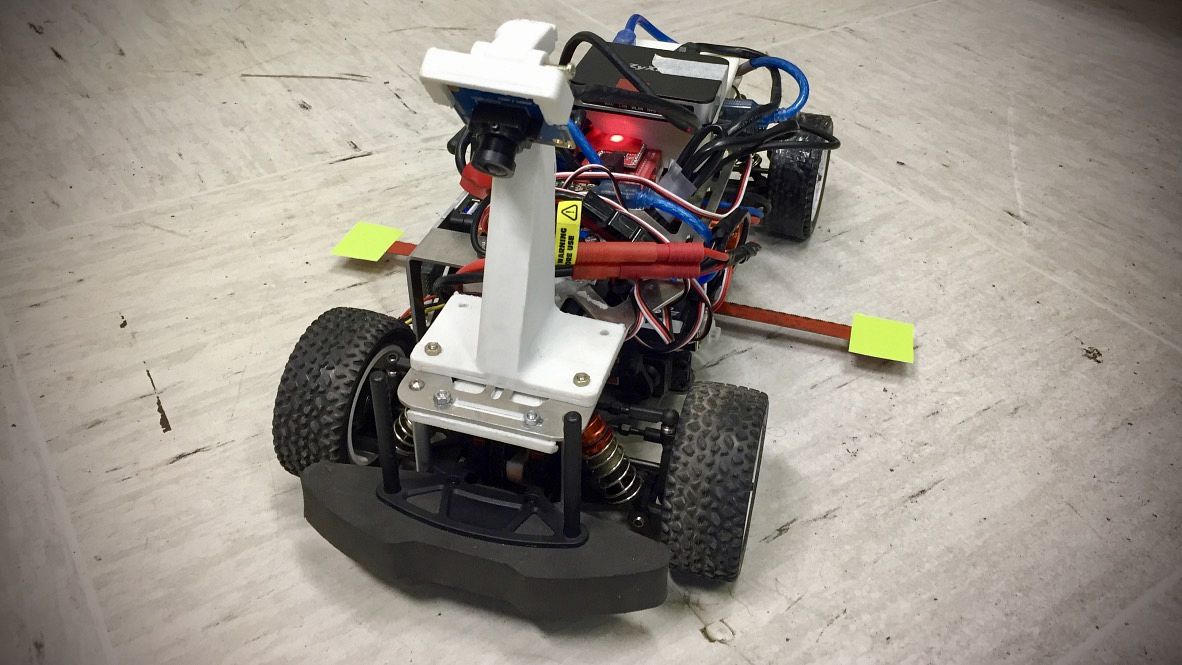Fast curves and burning rubber. Master vehicle engineering student, Conno Kuyt, has developed the first step towards a computer controlled slip system inside cars.
Kuyt's test vehicle was equiped with on-board sensors. (Photo: TU Delft)
Kuyt is the first student to graduate in vehicle engineering (Faculty of 3mE). He studied side-slips in cars. Side-slips are when a vehicle breaks out of a stable driving mode into a drifting motion and starts moving in another direction than it was heading.
Several other groups are studying the slip behaviour of cars. According to Kuyt, they fall into three categories: some groups restrict themselves to simulations, others work with model vehicles and others work with full-sized cars. But all practical research so far uses external sensors to record the car’s motion and side-slip angle – the angle between the car’s longitudinal axis and its direction of motion.
External high-speed camera
Kuyt reasoned that an on-board safety system should use on-board sensors, rather than external ones. So he used an external high-speed camera for reference and fitted a model car with a speedometer, an accelerometer and a computer vision system.
“All sensors have their specific strong and weak points,” said Kuyt. “An accelerometer is fast, but the measurements degrade over time. The computer vision system is stable over time, but it produces significant outliers. The speedometer is stable, but it does not record sideways movements.”
‘All sensors have their specific strong and weak points’
By using a sensor fusion technique to combine all three systems, Kuyt reached an on-board accuracy of over 90% of the car’s position, speed and side-slip angle. “We are now half-way”, said Kuyt. “Once you know the slip angle, you can start controlling it.”
Eventually an active slip control system should be able to steer like experienced rally drivers – taking fast curves sideways and heading out straight.
Do you have a question or comment about this article?
j.w.wassink@tudelft.nl


Comments are closed.